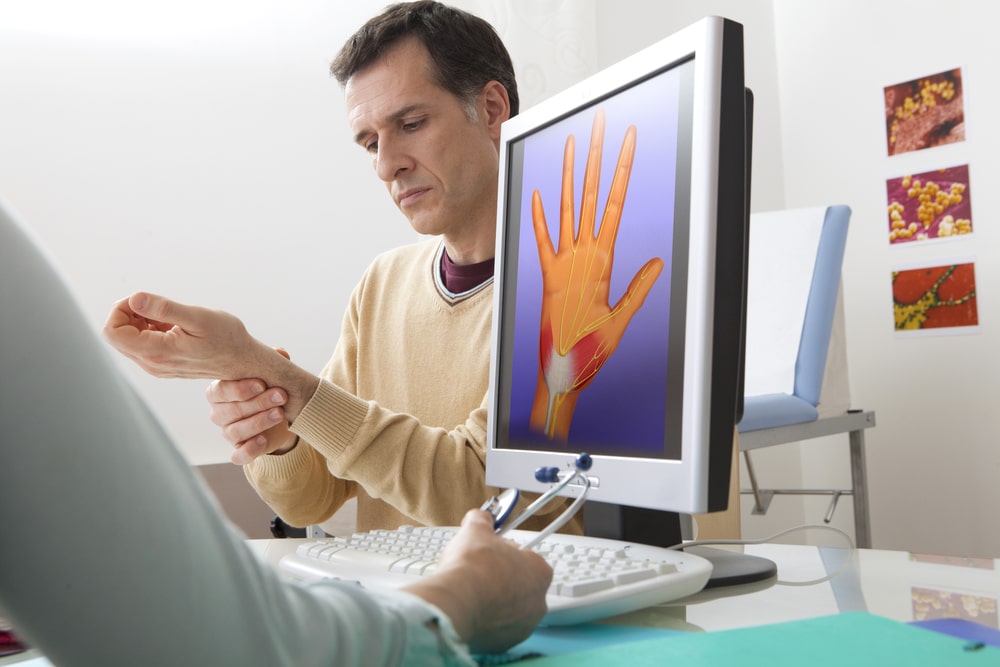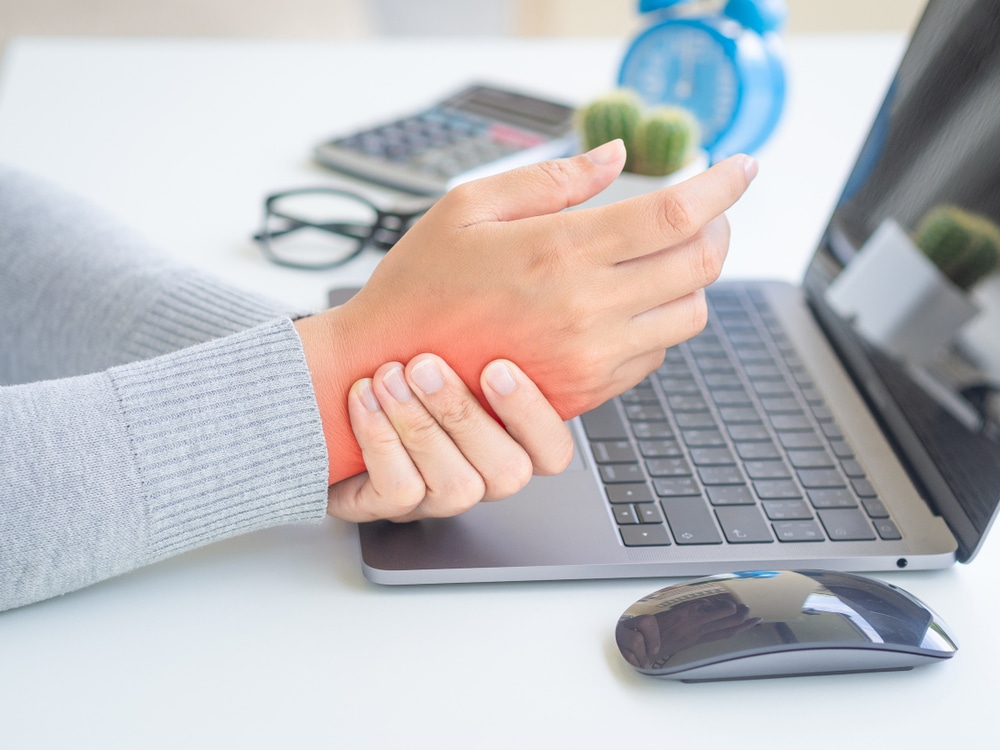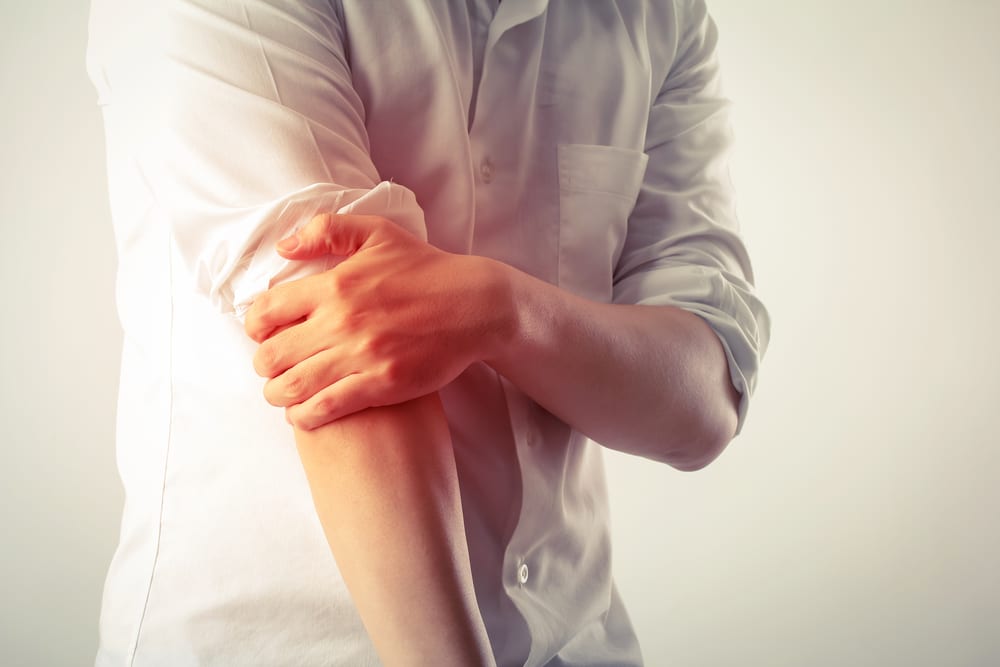Repetitive motion or repetitive stress injuries are often the result of work-related duties. Whether you sit at a desk and work on the computer every day or labor in a warehouse stocking shelves, repetitive motion can cause injury.
The injuries typically result from overworking specific body parts, unusual movements, poor posture, or some combination of the three. The injuries are usually to the muscles, tendons, or nerves of specific body regions, such as the wrists, hips, knees, etc.
Repetitive motion injuries can make work painful, and it is often challenging to take the required time to heal, meaning many workers cope with insufficient pain management strategies.
The best medicine is prevention and knowledge. If you can acknowledge how your profession might affect your body, you can take steps to minimize the risks.
Additionally, you can work with workers’ compensation doctors to get the treatment necessary should an injury evolve or occur.
Understanding How Repetitive Motion Can Cause Injury

Repetitive motion injuries or conditions stem from microscopic tears in tissues. Typically, the body can repair these tears given adequate time to heal.
Unfortunately, as the rips can result from work-related activities, the body is rarely, if ever, given time to heal; instead, a person repeats the same action that caused the initial tears, potentially developing more tears.
The continuous injury to the same area causes inflammation, causing pain. Additionally, the body will fail to heal without adequate rest and treatment, and the inflammation will evolve, becoming worse over time.
The best scenario for injured workers is treatment and rest. Unfortunately, not all patients realize they have the condition, leading to late diagnoses and severe injuries.
Reviewing the Symptoms of Repetitive Motion Injuries

Because a work-related injury can span the gamut, it is challenging to identify universal symptoms other than pain and inflammation. The injuries can involve the neck, wrists, shoulders, knees, hips, ankles, etc. Therefore, it is necessary to divide the injuries into common categories, such as tendonitis and bursitis, for more specific symptoms.
The most common symptom of tendonitis is pain over the affected site. Because the condition is made worse by active motion, the inflamed tendon can lead to skin redness. Tendonitis typically involves injuries to the elbow, bicep, and rotator cuff.
Bursitis typically develops with a decreased range of motion accompanied by tenderness and pain at the affected site. The condition may occur with swelling, redness, and the feeling of crunchiness in the affected area. Bursitis typically occurs in the lower body, such as the hip or knee regions, but also in the elbow.
Common Repetitive Motion Injuries
Ask a workers’ compensation doctor, and they will tell you that repetitive strain injuries are among the most common injuries in the U.S. Every disorder categorized as a repetitive strain injury is made worse by the continued need to work or repeat the same activity that caused the initial injury, resulting in persistent conditions like carpal tunnel, tendonitis, and bursitis.
While athletic injuries are often the cause of these conditions, making up over 50% of recorded injuries, work-related tasks, and typical daily duties can also cause the problems. For example, scrubbing the floor, typing at a desk, picking up your child, and numerous other activities can lead to injury.
What’s worse is some of the most common repetitive strain injuries or conditions can coexist. For instance, it is possible to have both tendonitis and bursitis. The problem for many patients is the challenge of differentiating between the conditions.
Carpal Tunnel Syndrome

When it comes to work-related injuries, carpal tunnel is among the most common for people working typical desk jobs. The damage occurs when the median nerve — a major hand nerve — is compressed or squeezed when maneuvering through the wrist.
Because it involves the wrist and the hand, it is primarily a concern for those spending countless hours in front of a computer monitor and keyboard.
People who experience carpal tunnel explain the symptoms as pain, tingling, and numbness. Unfortunately, the condition worsens over time, especially if patients do not seek early intervention.
For patients who avoid treatment altogether, carpal tunnel can result in nerve damage and escalating symptoms. When severe, the condition will likely require surgery to alleviate any symptoms.
Tendonitis

Tendonitis affects the tendons. More specifically, the condition is the inflammation of a tendon or tendons. Tendons are responsible for connecting and securing the muscles to the bones. The white fibrous tissue is essential for joint movement and stability.
Despite the impeccable strength of tendons, they can be prone to injury, especially repetitive motion injuries. Because repetitive strain injuries typically occur in the joints, tendons are immediately affected. The injuries usually occur in the shoulder, elbow, or bicep. Men are more prone to tendonitis than women.
The site of tendonitis is more likely to be at the point of insertion into the bone. Additionally, because there is a lubricating sheath where tendons connect to muscle, the sheath can also become inflamed, which is why pain can occur both in the muscle and joint.
Bursitis

Bursitis refers to the inflammation of or around a bursa sac. A bursa sac appears in roughly 150 areas of the body, serving as a cushion or lubricant between bone and tendon. While repetitive motion can cause injury to the bursa, it can also cause the development of new sacs.
Bursitis is a common condition, but traumatic bursitis is the most common among people under 35. The typical places bursitis occurs include the elbow, hip, and knee. The disorder can evolve from three different root causes:
- Trauma
- Infection
- Gout
Repetitive motion injuries usually escalate to sustained trauma of the areas above. When looking at bursitis as work-related, it is typically the result of trauma.
Carpal Tunnel Syndrome Versus Tendonitis
Many people cannot tell the difference between carpal tunnel syndrome and tendonitis. Most people with carpal tunnel syndrome often blame the condition for other pains throughout their arms and wrists, not understanding they might have tendonitis.
Tendonitis is often the result of repetitive strain or motion injuries. However, carpal tunnel syndrome does not have the same concrete diagnosis. Medical professionals are not sure of the cause of the syndrome, but they recognize similarities between patients, such as habits of typing or texting.
While the conditions are similar, they are also different. You can often tell which disorder you may have by the location of the discomfort. For example, with carpal tunnel syndrome:
- Pain is in the palm side of the wrist
- Tingling sensations move through the index finger, middle finger, and thumb
- Some patients may experience itchiness
While also displaying signs of pain in the wrist and fingers, Tendonitis occurs in a different location. The symptoms of tendonitis include:
- Pain in the top of the wrist connected to the backside of the hand
- Numbness in the pinky finger
It cannot be carpal tunnel syndrome whenever numbness or other sensations occur in the pinky finger because the median nerve does not connect to the pinky. While these signs can differentiate between the two conditions, they do not beat a proper diagnosis.
Diagnosing a Workplace Injury

Diagnosing work-related or repetitive strain injuries is not a straightforward process. Each condition — carpal tunnel, tendonitis, and bursitis — have different “tells” that will require investigation and proper diagnosis.
Carpal Tunnel Syndrome
Carpal tunnel syndrome will typically require a physical examination and various tests. A workers’ compensation insurance company may require independent medical exams when submitting a workers’ comp claim.
The exam and evaluation will often include discussing your history and specifics about your pain, such as the location, degree, and triggers. Additionally, the doctor will ask about overall health and if any illness or accident coincides with the start of your pain.
The examination will involve touching and positioning the hand to understand when and how the pain or other symptoms arise. A workers’ comp doctor may press or tap along the median nerve looking for a Tinel sign, tingling, or numbness of the fingers. They will also test for fingertip sensitivity, muscle weakness, and mobility issues.
A doctor might order several tests to confirm a diagnosis, including electrophysiological tests, ultrasound, X-ray, and magnetic resonance imaging (MRI) scan. Electrophysiological tests will include an electromyogram and nerve conduction studies. These tests help the doctor determine if other nerve conditions could be causing your symptoms.
An ultrasound will show your doctor the condition and location of the median nerve, providing a relatively definitive diagnosis. However, an X-ray and MRI might be requested to rule out other causes of your wrist pain and hand numbness.
Tendonitis
Diagnosing tendonitis typically requires only a medical history and physical exam. However, a doctor may request an MRI or imaging study. While not helpful in identifying inflammation, the MRI does provide a detailed image of the soft tissue. A doctor can locate tearing, ruptures, and other signs of tendonitis from the imaging.
Bursitis
While bursitis can result from repetitive motion, it can also stem from other conditions and issues. Therefore, your doctor will likely take some fluid from your elbow or knee — locations with a higher risk of infection — and test it for bacterial infection. Patients should understand that several conditions place them at a higher risk of developing infectious bursitis, including:
- Diabetes
- Gout
- Uremia
- Chronic obstructive pulmonary disease
- Gout
- Manual labor
Treatment Options for Repetitive Motions Injuries

Not all work-related injuries will require medical intervention. However, the treatment options will vary depending on the severity of the condition and its location.
For mild inflammation and pain, self-care is possible. Still, if you are coping with persistent pain or recurring and chronic inflammation, you should seek treatment from your primary care physician or a specialist in workplace injuries.
Home Care
Home treatments can include over-the-counter pain relievers and cold therapy for mild inflammation. The primary issue is relieving the painful swelling around the site. Therefore, you should elevate the aggravated limb and ice the joint for 20 or 30 minutes three times per day. Some limbs should not be kept immobile for more than 24 to 48 hours, such as the shoulder, or the patient risks decreased range of motion.
If you treat the inflammation with ice, do not place it directly on the skin. You will need to wrap the ice in a towel first to avoid damaging the skin.
Medical Care
While home care is Ok for some mild injuries, workers comp doctors typically recommend seeking medical treatment for persistent or chronic inflammation. The medical treatment will typically depend on the specific condition.
Carpal Tunnel Syndrome
Carpal tunnel may require surgery, but a treating physician will often prefer fitting patients a brace or splint combined with medication in the early or mild stages. A doctor may recommend using ibuprofen or a more potent pain reliever, depending on the patient’s pain level. Additionally, they might suggest steroid injections to help relieve inflammation.
If non-surgical options are ineffective, a doctor might recommend surgery. The surgery — a carpal tunnel release — focuses on easing the tension on the median nerve by increasing the size of its tunnel. The cutting of the ligament that forms the nerve tunnel roof causes relief.
Tendonitis
Ice and immobilization are the standard treatments of tendonitis in the short term. Long-term treatment will include heat and a combination of bands or braces and Non-steroidal anti-inflammatory drugs (NSAIDs) — aspirin, ibuprofen, naproxen.
If over-the-counter (OTC) medications nor prescription pain relievers ease the pain and inflammation of the condition, workers comp doctors might recommend steroid injections. The injections occur around the site, and patients should not require more than three injections within a year.
If the shoulder is affected, then immobilization is not suggested. A doctor might suggest rest for 24 to 48 hours, but a patient will begin range of motion exercises and physical therapy after that.
Inflammatory Bursitis
For inflammatory bursitis, which can result from work-related injuries, a doctor usually recommends rest, elevation, and ice. Additionally, if the inflammation is causing significant pain, your physician may recommend pain-killing creams, such as capsaicin. A steroid medication or injections may also bring comfort, but not all patients can take it, especially those with infectious bursitis.
Workers’ compensation law requires most employers to carry workers’ comp insurance. Workers’ comp doctors are familiar with common workplace accident injuries. Repetitive motion can cause injury, and many of those injuries are work-related.
If you are experiencing pain, swelling, and other symptoms, contact a Workers’ Comp Doctor.

